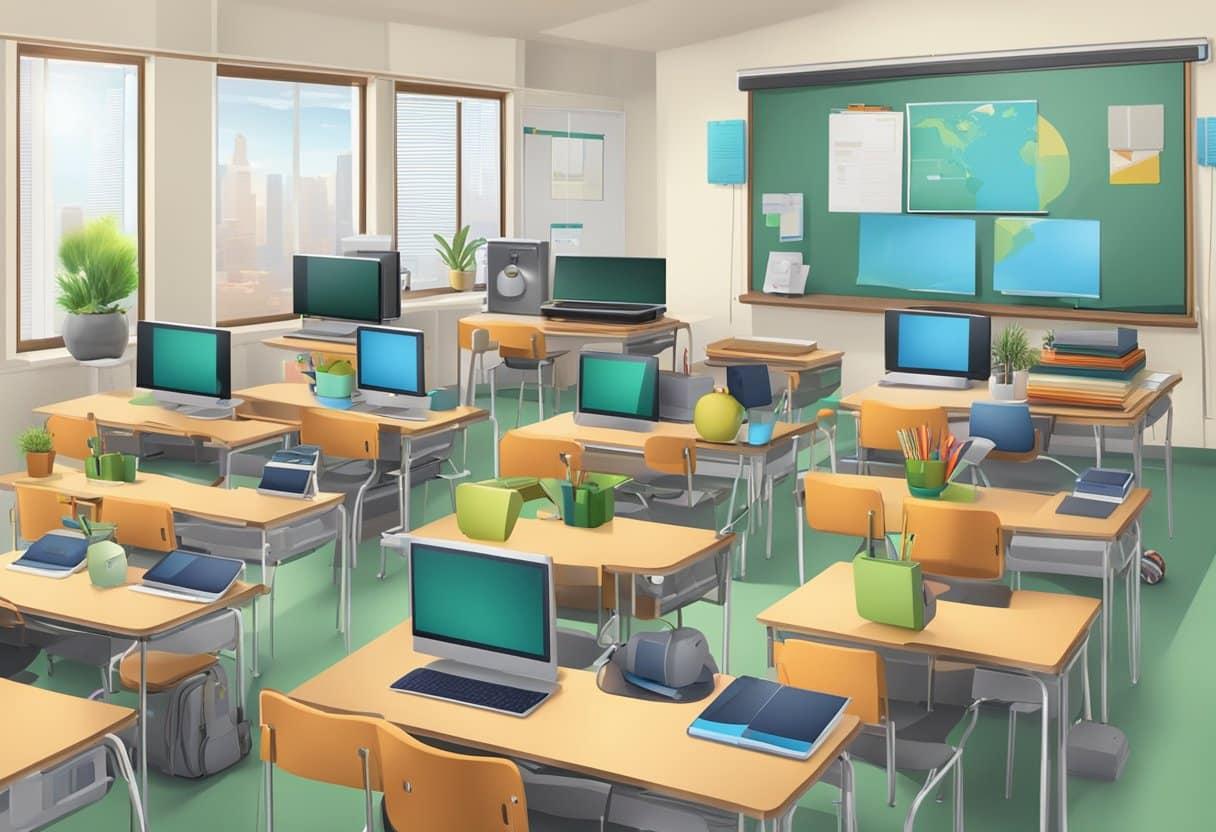Blended Learning: How Merging Traditional and Digital Education Transforms Classrooms
Introduction to Blended Learning
The educational landscape is rapidly evolving, with digital innovation reshaping how knowledge is delivered and absorbed. Blended learning, an approach that merges traditional face-to-face teaching with digital technologies, is at the forefront of this transformation.By seamlessly integrating the strengths of both methods, blended learning has revolutionized classrooms worldwide, promoting active engagement, personalized instruction, and improved learning outcomes. This comprehensive guide explores the benefits,practical tips,real-world examples,and future implications of adopting a blended learning model in education.
What is Blended Learning?
Blended learning—also known as hybrid learning—refers to a teaching strategy that combines traditional face-to-face classroom methods with online educational materials and digital interactions. Unlike fully online education, blended learning retains the personal touch of in-person instruction while leveraging the adaptability and resources of digital platforms.
- In-person components: Teacher-led discussions, collaborative group work, hands-on activities.
- Digital elements: Online assignments, interactive modules, video lectures, discussion forums, adaptive learning platforms.
- Integrated assessments: Real-time feedback, quizzes, and performance tracking across both modalities.
This hybrid approach fosters a more holistic and adaptive educational experience, ensuring that various learning styles are supported.
Key Benefits of Blended Learning
The rising popularity of blended learning in schools, colleges, and universities is fueled by its multitude of advantages.Here are some compelling benefits of merging traditional and digital education:
1. Enhanced Student Engagement
- Interactive digital content—such as simulations, games, and quizzes—makes learning more enjoyable and impactful.
- Face-to-face interactions ensure real-time questions, discussions, and collaborative problem-solving.
2. Personalized learning Paths
- Adaptive technologies allow students to learn at their own pace, catering to diverse abilities and backgrounds.
- Teachers can provide individual feedback and differentiate instruction more easily.
3. Flexibility and Accessibility
- Students can access digital resources 24/7, overcoming barriers like illness, travel, or location.
- Blended learning expands educational opportunities for remote and rural learners.
4. Improved Learning Outcomes
- Studies show higher retention rates, deeper understanding, and increased academic performance compared to traditional-only or online-only models.
- Continuous assessment and immediate feedback help close learning gaps early.
5. Teacher Empowerment
- Educators can utilize data from digital platforms to maximize teaching effectiveness.
- Teachers save time on routine tasks and focus more on creative instruction and mentoring.
Real-World Case studies: Blended Learning Success stories
Schools and educational institutions worldwide have embraced blended learning models with great success. Here are a couple of standout examples:
Case Study 1: Flipped Classrooms in High School Science
At Jefferson High School, teachers adopted a flipped classroom approach—students watched short video lectures at home, freeing up class time for experiments, problem-solving, and hands-on learning. This shift resulted in higher test scores, improved participation, and better conceptual understanding.
Case Study 2: Higher education Embraces HyFlex
During the COVID-19 pandemic, manny universities implemented hyflex models, where students chose between attending classes in person, online synchronously, or accessing recorded content asynchronously. The flexibility led to increased enrollment, reduced absenteeism, and more equitable access for non-traditional learners.
practical Tips for Implementing Blended Learning
Transitioning to a blended learning environment requires thoughtful planning and ongoing adaptation. Here are some practical strategies for teachers and administrators:
- Start Small: Integrate digital tools gradually. Begin with simple online quizzes, discussion boards, or flipped lessons.
- Focus on Learning Goals: Use technology to complement—not replace—core instruction.Ensure digital resources align with curriculum standards.
- Leverage Data: Analyze online assessment data to tailor instruction and quickly identify struggling students.
- Foster Collaboration: Incorporate group projects that use both classroom and digital interactions to promote teamwork.
- Invest in Professional Development: Offer training and peer support so teachers can confidently use new technologies and platforms.
- Prioritize Accessibility: Select tools and content that are accessible on various devices and accommodate all learners, including those with disabilities.
Firsthand Perspective: A teacher’s Journey With Blended Learning
“As a middle-school math teacher, transitioning to blended learning initially felt overwhelming.But I quickly saw the impact: quieter students became more engaged through online discussions, and I was able to personalize assignments for each learning level. Blended learning hasn’t just transformed my classroom—it’s deepened my connection with students and empowered them to take ownership of their learning journey.” – ms. Roberts, 7th Grade Math Teacher
The Future of Blended Learning in Education
As technology continues to advance, blended learning is well-positioned to become the norm rather than the exception. Artificial intelligence, adaptive learning platforms, and augmented reality are set to further personalize instruction and extend classroom boundaries. Educational leaders predict that blended learning will:
- Better prepare students for the digital workplace
- Create more inclusive and accessible classrooms
- Drive lifelong learning and continuous skill development
- Foster stronger teacher-student relationships, despite physical or virtual distance
Ultimately, blended learning empowers educators and learners to thrive in a rapidly changing world.
Conclusion: Blending Traditional and Digital Education for Success
Blended learning stands out as an innovative solution in modern education, seamlessly integrating traditional classroom strengths with the power of digital learning. By embracing this flexible, student-centered approach, schools can boost engagement, foster personalized learning, and equip the next generation with skills for a technology-driven future. whether you’re a teacher, administrator, parent, or student, understanding and implementing blended learning strategies can transform the educational experience—and set the stage for lifelong success.
Ready to revolutionize your classroom? Start exploring blended learning today and experience the remarkable difference it can make.

